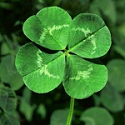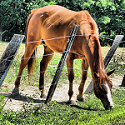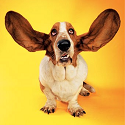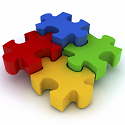SaaS product management professionals should always remember that there are four P’s in marketing, one being product. Unfortunately, software companies have a bad habit of thinking about product in isolation from the rest of the marketing mix. This is a particularly costly mistake in SaaS and is the root cause of many a SaaS Don’t. Unlike other businesses, SaaS creates a real-time, always-on connection between the customer and the company through the SaaS product. Smart SaaS product managers look to establish this connection as early as possible and to leverage it throughout the entire SaaS customer lifecycle.
This is the fifth and final post in a series that explores SaaS marketing strategies that drive growth throughout the customer lifecycle using the three fundamental SaaS growth levers: customer acquisition, customer lifetime value and customer network effects. In the course of this exploration, we’ve encountered numerous examples where the SaaS product itself is the instrument of growth. This final installment explores the product P in more detail providing Eleven Secrets of SaaS Product Design that drive growth at each stage of the customer lifecycle.
The Boundless SaaS Product
What are the boundaries of your SaaS product? Login? Purchase? Mobile? From a SaaS customer’s point of view, there is little distinction between your SaaS product, website, mobile app, support, service and community. It is a seamless online experience…if you design it that way! Great SaaS product management professionals don’t simply specify features and functions, they create online experiences that satisfy business, professional and personal needs. And in the course of satisfying those needs, they drive revenue growth by pushing the three fundamental SaaS growth levers.
Below are eleven SaaS product management secrets for creating SaaS products that sell themselves, one secret for each stage of the SaaS customer lifecycle. Underscoring each secret are two enduring economic themes: 1) create competitive advantage using the SaaS customer-company connection and 2) enable customer self-service to accelerate revenue and reduce costs. Grounded in sound SaaS economics, the Eleven Secrets of SaaS Product Design are more than mere technology tricks. They are SaaS growth drivers that challenge the creativity of SaaS product managers and encourage them to push SaaS product boundaries into the business to do things better, cheaper and faster than the competition.
SaaS Product Secret #1 | Optimize Public Pages
 Good SaaS marketers know that optimizing content for search and social media is essential to expanding online awareness. What great SaaS product managers also know is that your SaaS product should be an integral part of your search and social strategy. Does your SaaS product produce public pages that can be found by search engines? Can it? For example, customers often create useful and unique public content in the course of using a SaaS product, such as branded websites, widgets, profiles, comments, analyses, and so forth. Smart SaaS product managers enable these pages to be created in volume as part of the natural product experience and automatically optimize them for search and social.
Good SaaS marketers know that optimizing content for search and social media is essential to expanding online awareness. What great SaaS product managers also know is that your SaaS product should be an integral part of your search and social strategy. Does your SaaS product produce public pages that can be found by search engines? Can it? For example, customers often create useful and unique public content in the course of using a SaaS product, such as branded websites, widgets, profiles, comments, analyses, and so forth. Smart SaaS product managers enable these pages to be created in volume as part of the natural product experience and automatically optimize them for search and social.
That sounds pretty technical, so let’s look at a classic example. Search for any one of your favorite SaaS colleagues on Google and chances are that you will get a public-facing LinkedIn profile page in the top 5 results. This Google search of Joel York quickly finds my public facing LinkedIn profile page (usually 2nd after Chaotic Flow ;)). While I created the content, LinkedIn made it a landing page and automated the SEO (notice the big yellow button and the repetition of the keyword “joel york”). Many SaaS products have untapped opportunities to get found in search with public-facing trial content, product content, educational content, community content, and so forth. The important thing is that the content be a) original, b) useful and c) optimized, so that both search engines and the people landing on the pages will find it of value.
SaaS Product Secret #2 | Formalize Free Trial
 I’ve yet to see a SaaS product that can’t benefit from a free trial. I have, however, seen many SaaS products that can’t quite seem to pull it off well. Sometimes it’s really hard, because the product requires significant onboarding in order to shine. Other times, it’s just a foolish, flagrant violation of SaaS Don’t #3. Most of the time, it’s an under-appreciation of a SaaS product’s role in automating core business processes. Free trial facilitates product evaluation and shortens sales cycles. When trials are easily converted to production use, they also streamline purchase and adoption. Most customers are willing to pay for these benefits in the form of an inbound lead! From the vendor’s perspective, a free trial offers huge increases in sales and service productivity through customer self-service–even if all your leads are outbound.
I’ve yet to see a SaaS product that can’t benefit from a free trial. I have, however, seen many SaaS products that can’t quite seem to pull it off well. Sometimes it’s really hard, because the product requires significant onboarding in order to shine. Other times, it’s just a foolish, flagrant violation of SaaS Don’t #3. Most of the time, it’s an under-appreciation of a SaaS product’s role in automating core business processes. Free trial facilitates product evaluation and shortens sales cycles. When trials are easily converted to production use, they also streamline purchase and adoption. Most customers are willing to pay for these benefits in the form of an inbound lead! From the vendor’s perspective, a free trial offers huge increases in sales and service productivity through customer self-service–even if all your leads are outbound.
Great SaaS products don’t simply offer a free trial; they formalize core business processes around free trial to drive demand, shorten sales cycles, increase revenue per rep, accelerate deployment and reduce churn. It is far easier to get a customer to sign a contract after using your SaaS product than after seeing a demo. If this is not true, then you have bigger SaaS product issues than not offering a free trial. The secret to successful SaaS free trials is relentless pursuit of these benefits. Don’t settle for less.
SaaS Product Secret #3 | Enable Ecommerce
 Ecommerce in SaaS is about more than simply taking credit cards over the Internet. It is about streamlining purchase such that the online customer experience isn’t interrupted with offline activities. It should not only support self-serve purchase, but sales assisted purchase. Every purchase activity has potential for automation through e-commerce, including pricing, product configuration, trial account conversion, contract signing, payment, invoicing, billing and collections. Ecommerce done well can simplify the sales process by setting clear customer expectations. For example, transparent pricing limits discounts and standard contracts reduce redlines. Robust Ecommerce lays the foundation for further SaaS product design secrets that drive growth later in the customer lifecycle through churn reduction, upselling and cross-selling. In SaaS, purchase is part of your product. Let them buy!
Ecommerce in SaaS is about more than simply taking credit cards over the Internet. It is about streamlining purchase such that the online customer experience isn’t interrupted with offline activities. It should not only support self-serve purchase, but sales assisted purchase. Every purchase activity has potential for automation through e-commerce, including pricing, product configuration, trial account conversion, contract signing, payment, invoicing, billing and collections. Ecommerce done well can simplify the sales process by setting clear customer expectations. For example, transparent pricing limits discounts and standard contracts reduce redlines. Robust Ecommerce lays the foundation for further SaaS product design secrets that drive growth later in the customer lifecycle through churn reduction, upselling and cross-selling. In SaaS, purchase is part of your product. Let them buy!
SaaS Product Secret #4 | Design for Discovery
 If your customers are going to onboard themselves, then they need to be able to explore, understand, use and adapt your SaaS product without outside help, i.e., they must be self-taught. The natural conclusion then is that your SaaS product must be self-learning. Each user logs into your SaaS product with a different level of interest and expertise, however, most SaaS products are defacto designed for the expert user. For each new feature that is added, the typical SaaS product manager will ask: “Where is the most logical place to put this feature, so that it is easiest to access.” The result of this kind of thinking is that all features end up being really easy to access, creating a bewildering array of choices for the vast majority of non-expert users.
If your customers are going to onboard themselves, then they need to be able to explore, understand, use and adapt your SaaS product without outside help, i.e., they must be self-taught. The natural conclusion then is that your SaaS product must be self-learning. Each user logs into your SaaS product with a different level of interest and expertise, however, most SaaS products are defacto designed for the expert user. For each new feature that is added, the typical SaaS product manager will ask: “Where is the most logical place to put this feature, so that it is easiest to access.” The result of this kind of thinking is that all features end up being really easy to access, creating a bewildering array of choices for the vast majority of non-expert users.
Great SaaS products provide an experience that adapts to the interest and expertise of users over time. Novice users are encouraged to explore essential tasks, while expert users are allowed to tailor tasks to their individual tastes for speed and efficiency. At the enterprise level, organizations can configure processes that meet essential business needs. Design for discovery supports the process of personalizing a SaaS product: taking something unknown and generic and turning it into something understood and adapted to your needs. Like most of the SaaS product design secrets, design for discovery has an impact that extends well beyond its primary purpose. Easy discovery of new capabilities is essential for driving upsell and personalization is instrumental to reducing churn.
SaaS Product Secret #5 | Capture Customer Content
 There is only one SaaS marketing strategy to reduce churn: increase use. However, there are many types of use: new use, expert use, casual use, habitual use, individual use, organizational use, and so forth. The one thing all forms of use have in common though is that they create customer-specific content. Capturing customer content is the single most important SaaS product secret to reduce churn, because personalized data is directly proportionate to switching costs.
There is only one SaaS marketing strategy to reduce churn: increase use. However, there are many types of use: new use, expert use, casual use, habitual use, individual use, organizational use, and so forth. The one thing all forms of use have in common though is that they create customer-specific content. Capturing customer content is the single most important SaaS product secret to reduce churn, because personalized data is directly proportionate to switching costs.
Capturing customer content is the motivation behind SaaS Do #8 | Enable Mass Customization. Mass customization allows mass personalization without compromising essential SaaS economies of scale. Your competitors can copy every feature in your SaaS product, but they cannot copy the personal, historical record of customer use. Historical data contains critical business records, processes, policies, preferences, and organizational knowledge. After extended use, the value of customer content usually outweighs the value of your SaaS product itself. Capture that value!
SaaS Product Secret #6 | Unleash Upsells
 The best designed upsells are painless and invisible: painless in that the upsell value far outweighs the upsell price and invisible in that the upsell process provides a seamless bridge between the need for the new capability and the use of that capability. Well designed SaaS products upsell themselves by letting customers do what they want to do: use more. The key to unleashing upsells is a smooth synthesis of SaaS Product Secrets #3 and #4. If you’ve done a good job of letting customers discover new capabilities and purchase is as simple as clicking a button, then unhampering upsells amounts to little more than putting that button in the right place at the right time. Hired a new employee; add a new user. Got new work to do; get the new module you need to do it. Out of storage; add some. Need to integrate; turn on our API. Just click here!
The best designed upsells are painless and invisible: painless in that the upsell value far outweighs the upsell price and invisible in that the upsell process provides a seamless bridge between the need for the new capability and the use of that capability. Well designed SaaS products upsell themselves by letting customers do what they want to do: use more. The key to unleashing upsells is a smooth synthesis of SaaS Product Secrets #3 and #4. If you’ve done a good job of letting customers discover new capabilities and purchase is as simple as clicking a button, then unhampering upsells amounts to little more than putting that button in the right place at the right time. Hired a new employee; add a new user. Got new work to do; get the new module you need to do it. Out of storage; add some. Need to integrate; turn on our API. Just click here!
SaaS Product Secret #7 | Tantalize with Teasers
 Cross-selling is by it’s very nature more difficult than upselling. Upsells are often non-dicretionary, because they are driven by naturally expanding use. Whereas cross-sells usually take on the flavor of a new purchase driven by an unmet business need. It’s probably not enough to wait passively for your customer to stumble across an entirely new capability or recommend it to a friend, your SaaS product must cross-sell proactively.
Cross-selling is by it’s very nature more difficult than upselling. Upsells are often non-dicretionary, because they are driven by naturally expanding use. Whereas cross-sells usually take on the flavor of a new purchase driven by an unmet business need. It’s probably not enough to wait passively for your customer to stumble across an entirely new capability or recommend it to a friend, your SaaS product must cross-sell proactively.
Wait. How can a SaaS product be proactive? Unlike other products, a SaaS product creates a real-time, always-on communication channel between the customer and the company. Anything you have to say about your SaaS product can usually be said better inside your SaaS product, because you can say it in context. One of my favorite SaaS product communication channels is the login page. There is only one buyer personae that visits the login page: customers. Your login page offers prime real estate for tantalizing cross-sell teasers. It’s your customer home page! Once customers log in, you know who they are and what they are doing, offering even more opportunities to encourage consideration and trial of new capabilities in real-time based on actual usage patterns. And, after they log out, proactive offers and alerts can motivate them to return until they make a final purchase decision.
SaaS Product Secret #8 | Make Friends through Feedback
 Your SaaS product can do more than cross-sell by proactively speaking to your customers. As a two-way communication channel, it can also support, service and nurture community by proactively listening to them. Building community within your customer base is the first step to energizing network effects that drive viral growth and your SaaS product is the best place to nurture your customer community.
Your SaaS product can do more than cross-sell by proactively speaking to your customers. As a two-way communication channel, it can also support, service and nurture community by proactively listening to them. Building community within your customer base is the first step to energizing network effects that drive viral growth and your SaaS product is the best place to nurture your customer community.
Just like selling to your customers, listening to them is better done in context. When customer’s encounter issues, do you make them go searching through your website for a support email, or can they click to chat from within your SaaS product? Can they request new features? Comment on current features? Watch a training video? Register for a webinar? Report a bug? Visit your support forum? Check account billing status? When they need you, are you there? Because they are there and the beauty of a SaaS product is that they don’t really need to go anywhere else. Don’t make them!
SaaS Product Secret #9 | Consolidate Customer Content
 There is far more talk of crowdsourcing in the SaaS community than there is actual crowdsourcing. That’s because crowdsourcing is hard. Improving data quality, language localization, operational benchmarks and support are just a few of the ways smart SaaS product managers can put crowdsourcing to work. However, you can’t just wake up one day and say: “let’s add crowdsourcing into our SaaS product.” At a minimum, you have to have nailed SaaS Product Secret’s #4, #5, and #8.
There is far more talk of crowdsourcing in the SaaS community than there is actual crowdsourcing. That’s because crowdsourcing is hard. Improving data quality, language localization, operational benchmarks and support are just a few of the ways smart SaaS product managers can put crowdsourcing to work. However, you can’t just wake up one day and say: “let’s add crowdsourcing into our SaaS product.” At a minimum, you have to have nailed SaaS Product Secret’s #4, #5, and #8.
Crowdsourcing is a two step process. First, customers have to contribute content. Then, your SaaS product has to automate the process of consolidating that content into useful information. Mass customization followed by mass consolidation. For example, the process of crowdsourcing translation is essentially similar to the process of crowdsourcing a support knowledge base. Customers contribute solutions, those solutions get reviewed, and the best solution is chosen. The real SaaS product secret here is that the technical process of crowdsourcing can be baked into your SaaS product architecture in a fashion that opens new opportunities as your SaaS business grows.
SaaS Product Secret #10 | Streamline Sharing
 At the very peak of the SaaS growth pyramid, customer’s go beyond selling themselves and start selling their friends. When customers refer new prospects, the SaaS customer lifecycle begins anew. Your SaaS product can help close the loop and catalyze viral growth by streamlining sharing between your customers and your prospects. Streamlining sharing requires that you give your customers something useful to share and then reduce sharing it to the absolute minimum amount of work.For example, sharing important business documents or analyses is one of the best ways to drive viral growth in SaaS, because it embeds a referral inside collaboration through product use, similar to the invisible upgrade of SaaS Product Secret #6. Take a look at the Zoho sheet embedded in this post on SaaS sales commissions.
At the very peak of the SaaS growth pyramid, customer’s go beyond selling themselves and start selling their friends. When customers refer new prospects, the SaaS customer lifecycle begins anew. Your SaaS product can help close the loop and catalyze viral growth by streamlining sharing between your customers and your prospects. Streamlining sharing requires that you give your customers something useful to share and then reduce sharing it to the absolute minimum amount of work.For example, sharing important business documents or analyses is one of the best ways to drive viral growth in SaaS, because it embeds a referral inside collaboration through product use, similar to the invisible upgrade of SaaS Product Secret #6. Take a look at the Zoho sheet embedded in this post on SaaS sales commissions.
Viral sharing, like crowdsourcing, is easier said than done. Referrals are built on reciprocity. When a customer shares your product with a prospect, the customer is not doing you a favor. The customer is doing the prospect a favor. SaaS product referrals are nine parts motivation and one part automation. Whatever gets shared must be something the customer is certain will have value for the prospect. Don’t just ask your customers to say: “Try this SaaS product, you’ll like it.” Encourage customers to share something valuable with prospects that requires trial use. The the SaaS customer lifecycle repeats when you get them to sign up for that trial, and you are well on your way to viral growth!
SaaS Product Secret #11 | Manage Through Metrics
 The great thing about online communications channels from a marketer’s perspective is built-in measurement. There’s little need for costly surveys or panels to understand what customers think of your SaaS product, because every click speaks volumes. I’ve saved this SaaS Product Secret for last, because it augments every other SaaS Product Secret on the list. Metrics empower SaaS product managers to create better products faster. Not only do metrics provide critical input to SaaS product development, but they can also dramatically increase the effectiveness of sales and marketing. What are the traffic stats of your public pages? How do trial prospects navigate the fuzzy funnel. Which customers are exploring new capabilities and have the highest probability of upgrading? Which customers aren’t using your product and have the highest probability of churning? What can you do about it?
The great thing about online communications channels from a marketer’s perspective is built-in measurement. There’s little need for costly surveys or panels to understand what customers think of your SaaS product, because every click speaks volumes. I’ve saved this SaaS Product Secret for last, because it augments every other SaaS Product Secret on the list. Metrics empower SaaS product managers to create better products faster. Not only do metrics provide critical input to SaaS product development, but they can also dramatically increase the effectiveness of sales and marketing. What are the traffic stats of your public pages? How do trial prospects navigate the fuzzy funnel. Which customers are exploring new capabilities and have the highest probability of upgrading? Which customers aren’t using your product and have the highest probability of churning? What can you do about it?
Unfortunately, Google Analytics will be of limited help here. While there is much value in the aggregate metrics provided by many website optimization tools, customer-level metrics are where the action is when it comes to driving SaaS growth. It’s the differences between customers that matter most, not their similarities. Usage metrics are so critical to building great SaaS products that startups like Totango and Blue Nose Analytics have taken on the challenge full-time. I wish these guys much luck, because goodness knows we need the tools. Measuring every click for every customer and then making sense of it is a big data challenge for even a modest SaaS product, but the ROI is immense.
If you liked this post, then you’ll love the eBook of the complete SaaS growth series. And if you like it, please share it!

[…] Eleven Secrets of SaaS Product Design […]
Loads of great suggestions. And yes, the true test of a SaaS product is how seamlessly it integrates itself as a citizen of the WWW.
Found this post extremely useful Joel. The points you have mentioned above can be applied to SaaS businesses and can definitely prove to be rewarding. We at devContact.com have applied some of the strategies you have mentioned. For instance, we initially started out with offering paid services which wasn’t translating into customer acquisition. Later, we started offering our beta free and ever since then we have seen more sign-ups and have been able to increase our customer base. Thanks for the useful tips! 🙂
[…] SaaS founders and SaaS product executives. You might also want to check out this previous post: Eleven Secrets off SaaS Product Design, because this current post builds on the ideas presented in them with real-world Markodojo […]
[…] be considered the second choice when the same goal can be accomplished directly by innovative SaaS product design. As much as we love our teams, they don’t have economies of scale. More importantly, they are not […]
I know this is a dated post, but I just caught this write-up as I’m researching the building out of a SaaS product. Now I’m bookmarking the other links on this page for additional research and will definitely go through the “do’s” and “don’ts”.
Gret insights into the concepts behind SaaS, not just “Saas” as it’s defined in everyday literature. Although a couple of years old, it seems a lot of this still applies.
Thanks!
[…] York wrote about this in “Eleven Secrets of SaaS Product Design” — a great read for SaaS product […]
[…] businesses are also uniquely measurable. The SaaS product creates an always-on, communication channel between the company and the customer that allows for direct measurement of customer interaction. […]
[…] York, the Executive Director of Marketing and Product at Meltwater Group wrote a good piece on SaaS product design that touches on the challenge of maximizing relevance for this cloud-based […]
[…] businesses are also uniquely measurable. The SaaS product creates an always-on, communication channel between the company and the customer that allows for direct measurement of customer interaction. […]
[…] businesses are also uniquely measurable. The SaaS product creates an always-on, communication channel between the company and the customer that allows for direct measurement of customer interaction. […]
[…] Despre design-ul unui produs SaaS, pe Chaotic-Flow.com - Eleven Secrets of SaaS Product […]
[…] one of them that they isolate from the rest of the list. Joel York, author of the popular blog Chaotic Flow, understands the struggle. That’s why he’s providing five ways to build effective […]
Thoroughly enjoyed this post. The content is helpful for small businesses and as part of a startup myself, navigating through a fuzzy funnel is possible with Badger Maps. We are here to help sales reps help gather more leads in less time and efficiently. More information in our site badgermapping.com.
Great article for SaaS product developers. If we incorporate these, SaaS products can be really successful. However, building SaaS is not easy. Someone can spend months putting together the SaaS infrastructure before they start building their business application. Techcello (www.techcello.com) can help here by weaving the multi-tenancy and SaaS together – it addresses all the SaaS essential ingredients and helps the SaaS developers focus on building their business functionality on Day 1. Brings in some of the secrets mentioned by Joel (#2, #3,#4,#6,#8,#11) in ready-made form.
[…] Eleven Secrets of SaaS Product Design from Joel York: […]